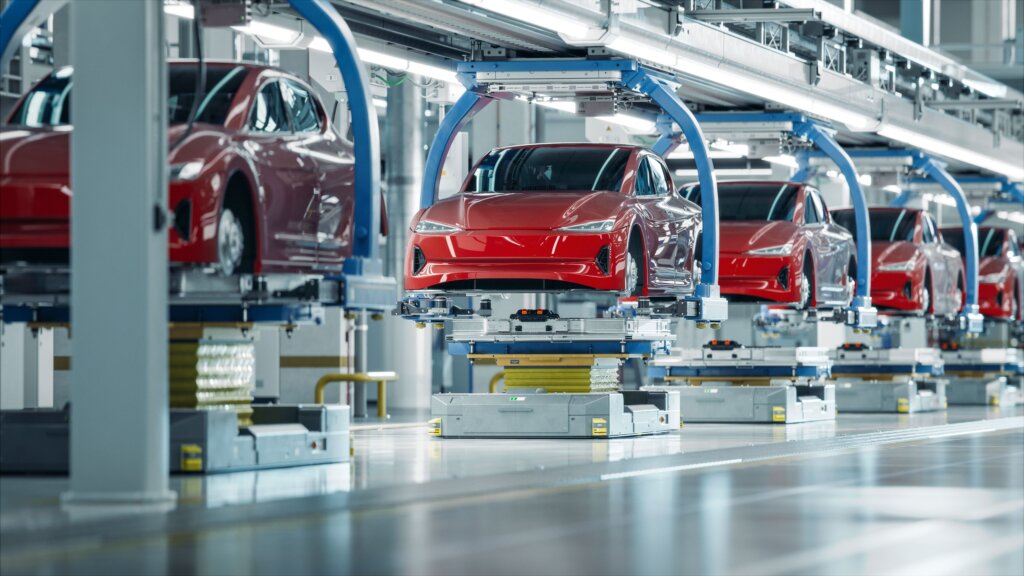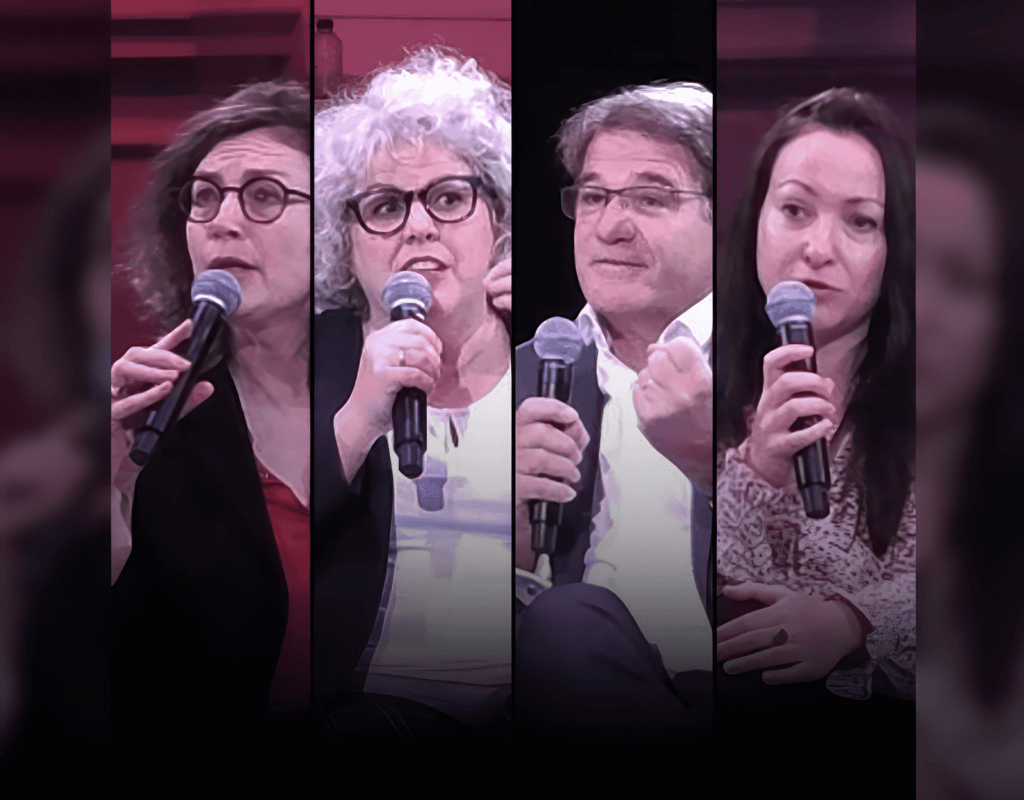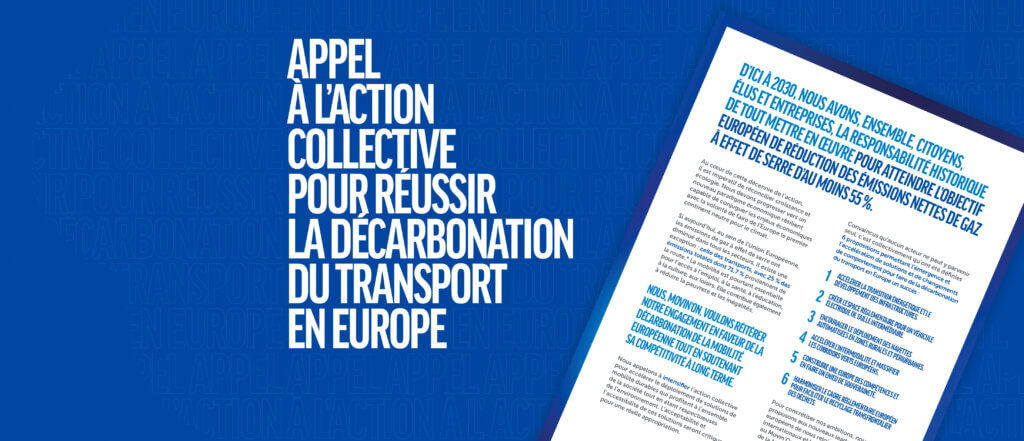Quebec Expands EV Development, Facing Down U.S. Tariffs
Canada’s decarbonization goal is net-zero emissions by 2050 and becoming a world leader in zero-emission vehicles, as Prime Minister Justin Trudeau declared in 2021. This goal became law with the passing of the Canadian Net-Zero Emissions Accountability Act in June 2021. In Quebec, government actions are driving the transition with regulations, purchase incentives, and investments in charging infrastructure.
But U.S. President Donald Trump, at the start of his second term, is threatening tariffs on Canada’s exports to its southern neighbor, prompting Quebec to strengthen its protective policies.
By the numbers, Canada is currently the 13th-largest auto-producing nation in the world, and seventh largest auto exporter by value, producing 1.4 million vehicles and exporting $32 billion worth of vehicles in 2020. Today, there are 77 motor vehicle manufacturing companies in Quebec, according to Dun & Bradstreet, one of Wall Street’s oldest data and analytics providers.
Canada has committed itself to achieve 100 percent zero-emission vehicle sales by 2035 for all new light-duty vehicles. This goal includes interim targets of at least 20 percent by 2026 and at least 60 percent by 2030, as detailed in Canada’s 2030 Emissions Reduction Plan. These targets are in Canada’s Electric Vehicle Availability Standard, finalized in December 2023.
Nowhere are Canadians more accepting of zero emission vehicles than in Quebec. Over half the electric vehicles sold in Canada in 2024 were purchased in Quebec, where the Tesla Model Y was the province’s top-selling EV in 2024, with the Hyundai Ioniq 5 coming in second, and in third place, the Chevrolet Equinox EV. About 84 percent of the Equinox’s electric volume is produced in Quebec.
Now, it’s up to Quebec’s new ‘Superminister’ to turn these goals into action in her province.
Her constituents call Christine Fréchette Quebec’s ‘Superminister.’ She holds much of the province’s automotive and energy future in her portfolio. The 55-year-old politician, elected just two years ago, now has a tongue-twister of a title bestowed in September 2024.
Fréchette is the Minister of the Economy, Innovation and Energy; Minister Responsible for Regional Economic Development; and Minister Responsible for the Metropolis and the Montreal region. In the National Assembly of Quebec she represents Sanguinet, a district on the south shore of the St. Lawrence River across the river from Montreal.
Fréchette is a member of the Coalition avenir Québec, or Future Quebec Coalition, a nationalist, conservative provincial political party.
Government Officials Collaborate With Financial Heavyweights
In early February, Fréchette and Quebec Prime Minister François Legault met with the leaders of HydroQuebec, Investissement Quebec, and the Banque Nationale as well as the Desjardin Cooperative, the largest financial and insurance services cooperative in North America, to examine the effects of the currently suspended Trump tariffs and develop action scenarios for Quebecois companies and workers.
Saying that the tariff delay until March 4, 2025 ordered by President Trump “…is good news, but the threat is not over,” the Quebec government officials vowed, “Our government will be there to protect our economy and watch over our jobs.”
There are five automakers who each employ more than 10,000 people in Quebec: the Volvo Group, Ford Motor Company, Honda, Cummins, and Toyota, Transport Canada reports.
The financial companies are taking protective measures of their own. Investissement Québec is improving its support for exporting companies, the financial services Crown corporation announced February 19. While the threat of tariffs on Canadian exports to the United States still looms, Investissement Québec is adding another string to its bow to better support businesses by launching Panorama, which aims to support Quebec exporters in diversifying their exports to markets other than the United States.
Panorama includes flexible financing, as well as support services offered by Investissement Québec’s 60+ export experts, in collaboration with the Quebec economic network abroad and in Canada as well as local partners. Support can include personalized business intelligence and strategic advice on diversification.
In a January 2025 report on Canada’s tariff vulnerability, the Desjardin Cooperative listed the Canadian industries most likely to be most affected by U.S. tariffs as: “aerospace, primary metals, food and beverage manufacturing, machinery and chemicals. The oil and gas and automotive sectors are more likely to be exempted from tariffs, either immediately or later down the road.”
“The election of Donald Trump to the White House has generated a very high level of uncertainty in Canada, and the president elect’s multiple statements since then have done nothing to alleviate fears. The possibility of tariffs is the biggest threat to the Canadian economy, as more than 70 percent of our exports of goods and services are destined for the US,” the Desjardin report states.
“Canada’s oil extraction and auto and parts manufacturing sectors are the most dependent on exports to our neighbor to the south. But we don’t believe they’re the most at risk under the new Trump administration. In the case of crude oil, US production is insufficient to meet domestic needs. And with imports from Canada representing 58 percent of US oil imports, tariffs risk significantly raising prices, which would run counter to Trump’s promises to reduce energy prices. In the case of automotive manufacturing, the US industry is highly reliant on Canada and Mexico…”
“Fortunately, Quebec transportation equipment manufacturers have diversified their export markets outside the U.S., particularly in Europe,” the Desjardin report explains.
Mineral Collaboration on the Table
On February 6, 2025 in Montreal, Fréchette together with Jonathan Wilkinson, Canada’s Minister of Energy and Natural Resources, and Maïté Blanchette Vézina, Quebec’s Minister of Natural Resources and Forests, announced the establishment of the Quebec-Canada Collaboration Table on Energy and Resources.
This collaboration mechanism, in support of Quebec’s identified priorities to have access to critical minerals for the manufacture of electric vehicles, will facilitate the mobilization of both public dollars and private capital to support sustainable economic growth and climate outcomes.
“In the current context, it is important to establish a collaboration table to ensure support for the development of critical and strategic mineral projects, in line with Quebec’s natural resource priorities,” Fréchette said.
“These minerals are an integral part of our strategies for decarbonizing our economy. It is therefore essential to set up this framework to agree on roles and responsibilities while respecting the constitutional jurisdictions of our respective governments. I believe this table will be beneficial in effectively advancing the projects that are necessary for Quebec’s future,”
With this in mind, Fréchette is keeping a new clean energy understanding among the provinces of Quebec, Newfoundland and Labrador at the top of her agenda.
Energy Collaboration Between Two Provinces
The province of Quebec and the province of Newfoundland and Labrador have signed a comprehensive new deal to build new energy projects and throw out a decades-old contract that has been a source of strife and bitterness for Canada’s easternmost province.
The agreement in principle ends a contract signed in 1969 that allowed Quebec to buy cheap power from Labrador’s Churchill Falls hydroelectric plant, and it promises hundreds of billions in revenue for Newfoundland and Labrador through a new, more equal partnership.
“When it comes to energy and natural resources, Quebec is already a strong economic leader. Deepening our collaboration by aligning federal and provincial support, based on Quebec’s energy and resource priorities, will help create jobs, drive economic growth and build a sustainable future that benefits Quebecers and all Canadians,” said Jonathan Wilkinson, Canada’s Minister of Energy and Natural Resources.
Fréchette agreed on behalf of Quebec.
“MORE THAN EVER, IT’S IMPORTANT THAT QUEBEC AND CANADA WORK TOGETHER TO DEVELOP OUR EERGY AND NATURAL RESOURCES SECTORS IN A SUSTAINABLE WAY, WHILE RESPECTING QUEBEC’S PRIORITIES AND EXPERTISE. … BY COLLABORATING TO MEET OUR COMMON CHALLENGES, WE CAN MOVE FORWARD AND MAKE QUEBEC A TRUE LEADER IN THE GREEN ECONOMY.” – Christine Frechette, Minister of the Economy, Innovation and Energy; Minister Responsible for Regional Economic Development; and Minister Responsible for the Metropolis and Montreal region. In the National Assembly of Quebec, she represents Sanguinet.
The Churchill Falls generating station is owned jointly by the Newfoundland and Labrador Crown-owned energy companies. Under a 1969 agreement, Newfoundland and Labrador owned most of the facility, but Quebec pocketed most of its profits, paying just 0.2 cents per kilowatt hour of electricity from the plant.
The contract was set to expire in 2041, but the new memorandum of understanding between the provinces will end it 17 years early. As of January 1, Quebec will pay an average price of 5.9 cents per kilowatt hour, netting Newfoundland and Labrador Hydro about $1 billion per year until 2041.
“Today, everything changes for Newfoundland and Labrador. Today, after more than 50 years of a lopsided agreement that has been such a contentious point for Newfoundland and Labrador, we finally have a new deal on the table for Churchill Falls with Quebec,” Premier Andrew Furey exulted during a speech in St. John’s, Newfoundland that drew standing ovations.
He picked up a copy of the 1969 agreement and tore it in half, as the audience of politicians and government officials cheered.
Unlike the old deal, there are provisions in the new agreement allowing those rates to increase as the market changes.
The new contract also lays out a partnership between Hydro-Québec and Newfoundland and Labrador Hydro to upgrade and expand the current Churchill Falls facility and to build a new hydroelectric plant further down the Churchill River at Gull Island, a spot long eyed for development. The new deal is set to run until 2075.
Hydro-Québec will pay Newfoundland and Labrador Hydro C$3.5 billion for the right to co-develop the projects in Labrador. It will also manage the construction of the Gull Island development and the Churchill Falls expansion, and absorb any cost overruns, officials said.
The agreement will yield more energy and more money for both provinces.
Premier Furey said his province stands to earn about C$200 billion, if all proceeds according to the document. “Two hundred billion new dollars – every time I say that I have to pause,” he said.
“It’s a win-win deal,” Quebec Premier Legault agreed. “$200 billion for Andrew, $200 billion for me.” ‘Andrew’ is Andrew Furey, the Premier of Newfoundland and Labrador.
The provinces plan to have a binding agreement in place no later than April 30, 2026, and Legault said he wants to “close the deal” as soon as possible. Once that happens, Quebec will pay the higher rates for Churchill Falls power retroactive to January 1, 2025.
The Churchill River flows through traditional Innu territory in central Labrador. Innu groups in Labrador and Quebec have sued Hydro-Québec and Churchill Falls (Labrador) Corp., the entity that operates the generating station and transmission equipment, for destruction of land and culture caused by flooding.
But on December 12, the Innu Nation in Labrador was on hand to sign the memorandum between the two provinces. Grand Chief Simon Pokue said the premiers have acknowledged the problems of the past, and he trusts they will include the Innu in future plans and benefits. “They’ve acknowledged that this is our land,” Pokue told reporters.
Hydro-Québec President and CEO Michael Sabia said the projected expansion and construction would create the second-largest hydroelectric complex in North America, after Hydro-Québec’s James Bay facility.
“In an increasingly uncertain world, it is an advantage for Quebec to have more certainty about its energy security. We negotiated this agreement with caution and rigor. For 50 years, we are assured of a realistic financial package that guarantees the affordability of electricity and the profitability of Hydro-Québec. As project manager, with the great expertise of our teams, we are confident that we will be able to control the construction costs of the new infrastructure.”
“To carry out all of these projects, we are committed to maintaining an open and transparent dialogue with our Indigenous partners in Labrador and Quebec,” Sabia said.
“THIS AGREEMENT IS AN IMPORTANT STEP TOWARDS DECARBONIZING QUEBEC AND PROTECTING OUR ENVIRONMENT. IT IS AN ESSENTIAL CONTRIBUTION TO OUR COLLECTIVE WEALTH. WITH THIS AGREEMENT, CITIZENS WIN, THE ECONOMY WINS AND, OF COURSE, FUTURE GENERATIONS WIN.”
– Michael Sabia, Hydro-Quebec President and CEO
“The agreement renews access to Churchill Falls production and adds new production capacity through an increase in the capacity of the existing plant, the development of a new plant on the Churchill Falls site, and the construction of a new plant on Gull Island. In total, 9,190 MW will be produced, of which 7,200 MW will be purchased by Hydro-Québec and 1,990 MW by Newfoundland and Labrador Hydro,” the HydroQuebec chief explained.
Innovative Collaboration in the Lab
Funding granted by CED has enabled the Innovative Vehicle Institute, a nonprofit college center for technology transfer affiliated with the Cégep de Saint-Jérôme, a post-secondary school in the Laurentides region of Quebec. IVI helps other organizations in the vehicle industry develop solutions for innovation and technology transfer.
IVI is known for its projects to electrify transportation and related projects to improve energy efficiency and reduce polluting emissions. The organization works on developing connected vehicles, autonomous vehicles and vehicle intelligence solutions.
“All of the high-tech equipment acquired thanks to CED has made its operations more reliable and opened the door to various increasingly ambitious projects,” Pier-Luc Laurin, IVI General Manager, said.
“Among these projects, one that stands out is by Exprolink, which has designed the first 100 percent electric vacuum cart, along with the one by GrandTuned/Ecotuned to convert conventional vans into electric vans – both supported by CED,” Laurin explained.
Advances in automation, robotization and recognition of the environment are enabling IVI to work on designing autonomous and intelligent vehicles able to make decisions.
Since its creation, the Institute has worked on over 550 projects for 230 clients and partners, most of which are manufacturing SMEs.
In Quebec, there are 59 centers for technology transfer. Together, their range of knowledge and equipment that enables help for 6,000 businesses and organizations in Quebec to improve their processes, products or practices every year.
Smaller Companies Grow With CED Funding
WattByWatt, a renewable energy company that uses perovskites to convert light into energy, has won a $975,000 loan from the Canada Economic Development for Quebec Regions, or CED, that will enable the Laval, Quebec start-up to increase its production capacity. With its 12 regional business offices, CED is the key federal partner in Quebec’s regional economic development.
Created in September 2020, WattByWatt is a team of scientists, engineers and financiers who innovate ways to produce efficient and reliable energy with minimal environmental footprints.
The company has developed synthetic perovskite modules whose photovoltaic capacity makes it possible to convert solar and artificial light into electrical energy to recharge or power batteries such as those in electronic devices and smart card readers.
The modules function indoors and outdoors and are more efficient and less costly to produce than traditional silicon-based solar cells.
Perovskites are a family of yellow, brown, or black materials with the potential for high performance and low production costs in solar cells, fuel cells and catalysts.
Metal-halide perovskites are the main absorbing material, or “active layer,” in a perovskite solar cell. In this potentially inexpensive technology, a thin layer of perovskite absorbs light, which excites charged electrons. When these excited electrons are extracted, they generate electric power.
This is possible due to perovskite’s ability to absorb certain colors of light very effectively. Perovskite absorber layers can also be stacked on top of another absorber layer, such as silicon, to use the colors of light not absorbed in the perovskite, resulting in a cell that can be theoretically more efficient than cells made of either material on their own.
Perovskite cells are called thin-film because they require much thinner active layers than crystalline silicon photovoltaics.
“Perovskite solar cells have shown remarkable progress in recent years with rapid increases in efficiency, from reports of about 3 percent in 2009 to over 26 percent today on small area devices (about 0.1 cm2). Perovskite-silicon tandem cells have reached efficiencies of almost 34 percent. While perovskite solar cells have become highly efficient in a very short time, perovskite PV is not yet manufactured at scale and a number of challenges must be addressed before perovskites can become a competitive commercial PV technology,” according to the U.S. Department of Energy
“We are delighted to receive this support from Canada Economic Development for Quebec Regions, which arrives at a key moment for WattByWatt. This contribution will enable us to optimize our development and strengthen our business strategy and partnerships for the renewable energy market,” Riad Nechache, WattByWatt CEO, said.
“Thanks to our innovative technology, we can generate energy both from artificial light and by drawing on the solar spectrum, as conventional photovoltaic solutions do. Integrating it in tandem with silicon also opens up new marketing perspectives that are promising. This funding will without a doubt accompany the large-scale deployment of our perovskite-based technology,” he said.
In Quebec, small and medium-sized enterprises account for 99.7 percent of the province’s businesses and 50 percent of its overall income.
Bankruptcy Not a Barrier
Finally, the Swedish battery developer Northvolt AB, which has filed for bankruptcy protection in the United States, said the move will not jeopardize its planned electric vehicle battery plant in Quebec – though hundreds of millions of taxpayer dollars invested in the parent company could be lost.
Amid an uncertain global market for EVs, Northvolt and several subsidiaries filed for a court-supervised reorganization of its debt and assets under Chapter 11 of the U.S. bankruptcy code.
But Northvolt said its Canadian subsidiary is financed separately and “will continue to operate as usual outside of the Chapter 11 process.”
The Northvolt plant, named Northvolt Six and slated for construction about 25 kilometres east of Montreal, amounts to a C$7 billion undertaking that aims to make battery cells and cathode active material for electric vehicles.
“I see no reason today to think that we won’t do it as planned,” said Paolo Cerruti, Northvolt co-founder and CEO of Northvolt North America, which oversees the project. “Activity on the site is daily and very intense, and there are trucks every day and around 150 people working.”
But concerns around Northvolt’s financial solvency have raised questions about a project to which Quebec and Ottawa have pledged $2.4 billion in funding. The Caisse de dépôt et placement du Québec, the province’s pension fund manager, has also poured $200 million into the Swedish company.
The province granted Northvolt a $240-million secured loan to help buy the land for the plant in Quebec’s Montérégie region. The government also invested $270 million in parent company Northvolt AB.
“This was not the desired scenario, no one is hiding it, we would have liked it to proceed differently,” said Fréchette at a news conference in November 2024
“If there’s an amount at risk, it’s this one,” the Superminister said. “We’ll have an idea of the future of this amount” only when the restructuring process wraps up. The province has no intention of investing more money in Northvolt.
At a business forum on December 19, 2024, Fréchette stated a fact that has become universally true across the French-speaking province. “Even though Quebec is well-endowed with energy resources, the enormous current demand forces us to make choices and prioritize energy projects likely to ensure Quebec’s long-term development,” she said. “Indeed, over the past few years, we have experienced a paradigm shift that makes economic development dependent on energy development and vice versa.”
Toute l’actualité de Movin’On
dans votre boîte mail
Auteur
Partager
Tweets de @movinonconnect
Movin'On 2035 TODAY EP02 - Circular Economy & Competitivity
Movin’On 2035 TODAY EP01 – Fair Mobility for All https://x.com/i/broadcasts/1yNxagBrWZbGj
✨ THAT'S A WRAP!
Movin'On Summit 2024 has just concluded in Brussels!
More than 350 leaders and experts in sustainable mobility gathered to exchange ideas, collaborate, and share their vision for desirable and decarbonised mobility in Europe. Together, we explored ways to build…
🔴 Live from #MovinOnSummit2024
@AshaSumputh has just invited Denis Machuel, CEO at @AdeccoGroup and Florent Menegaux, President of the @Michelin Group & President of Movin'On
L’actualité de la mobilité durable
Découvrez les dernières tendances, des analyses thématiques et nos prochains rendez-vous






